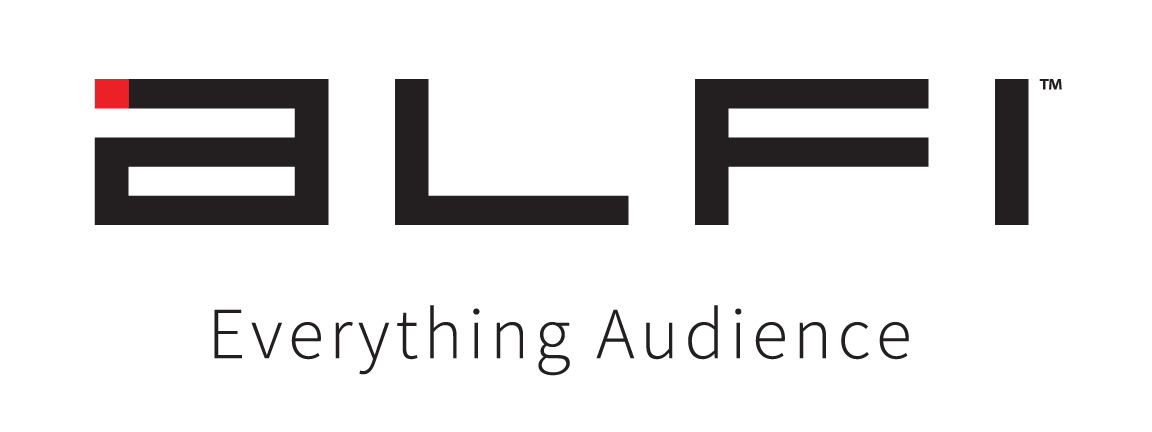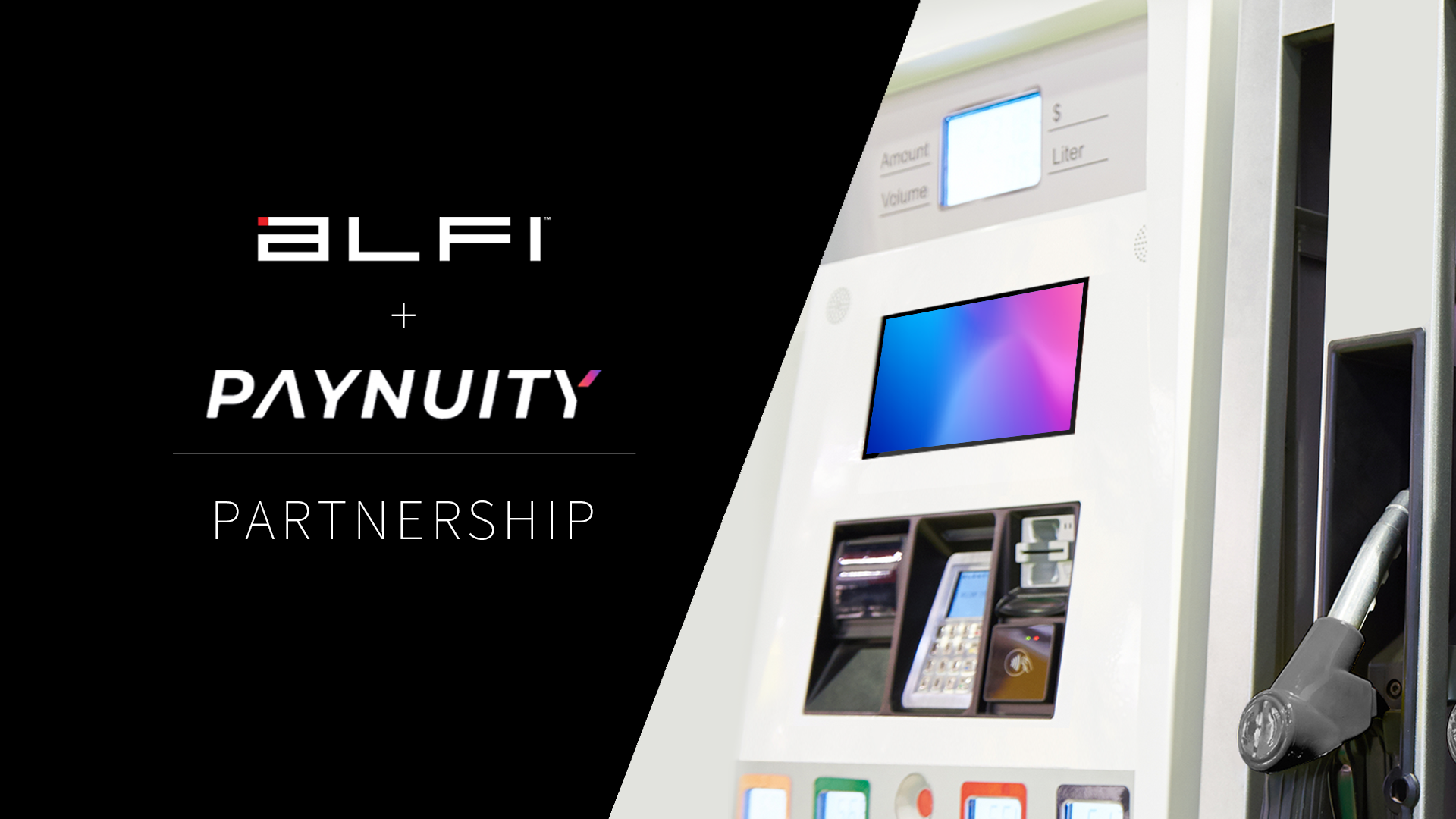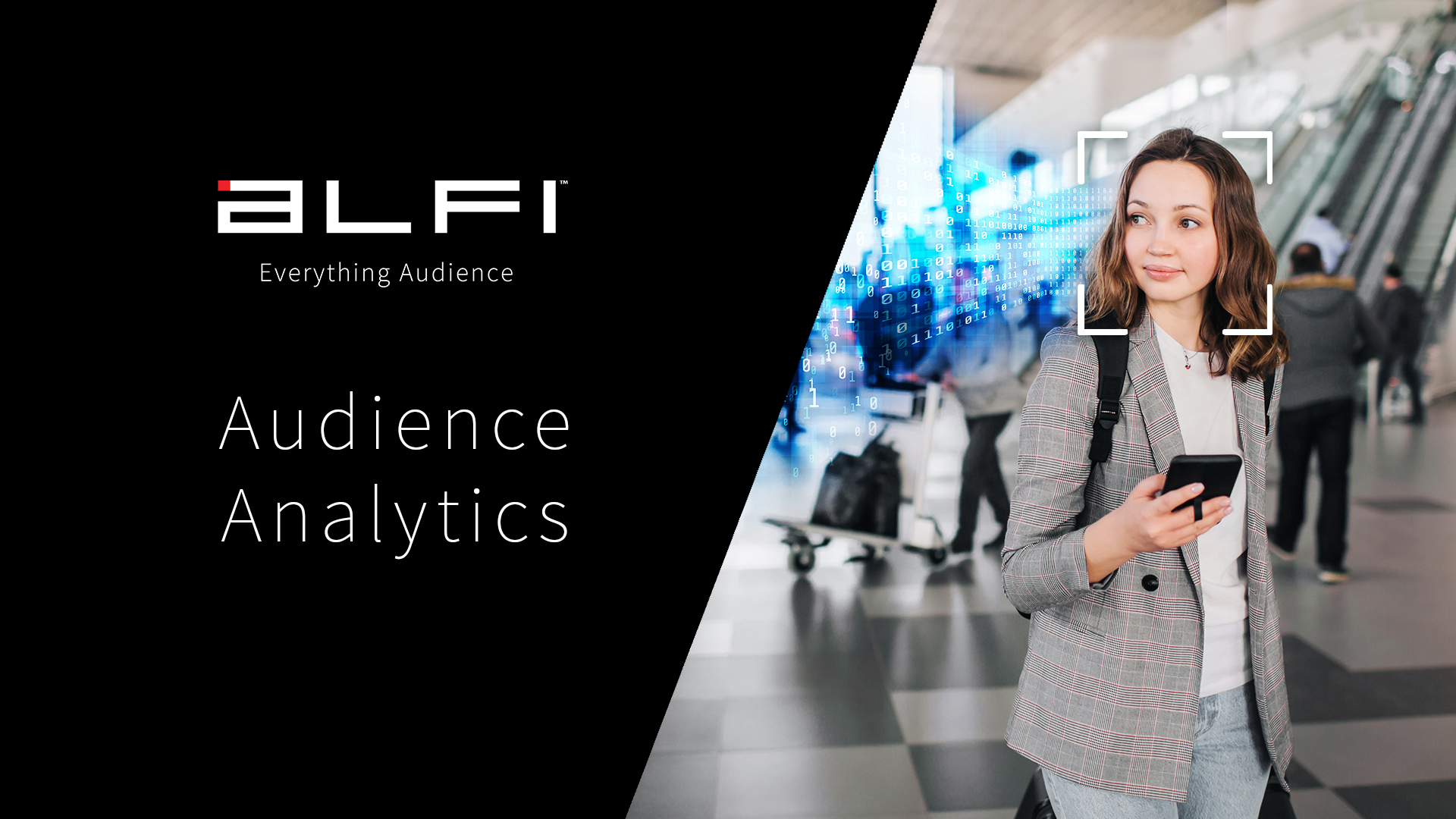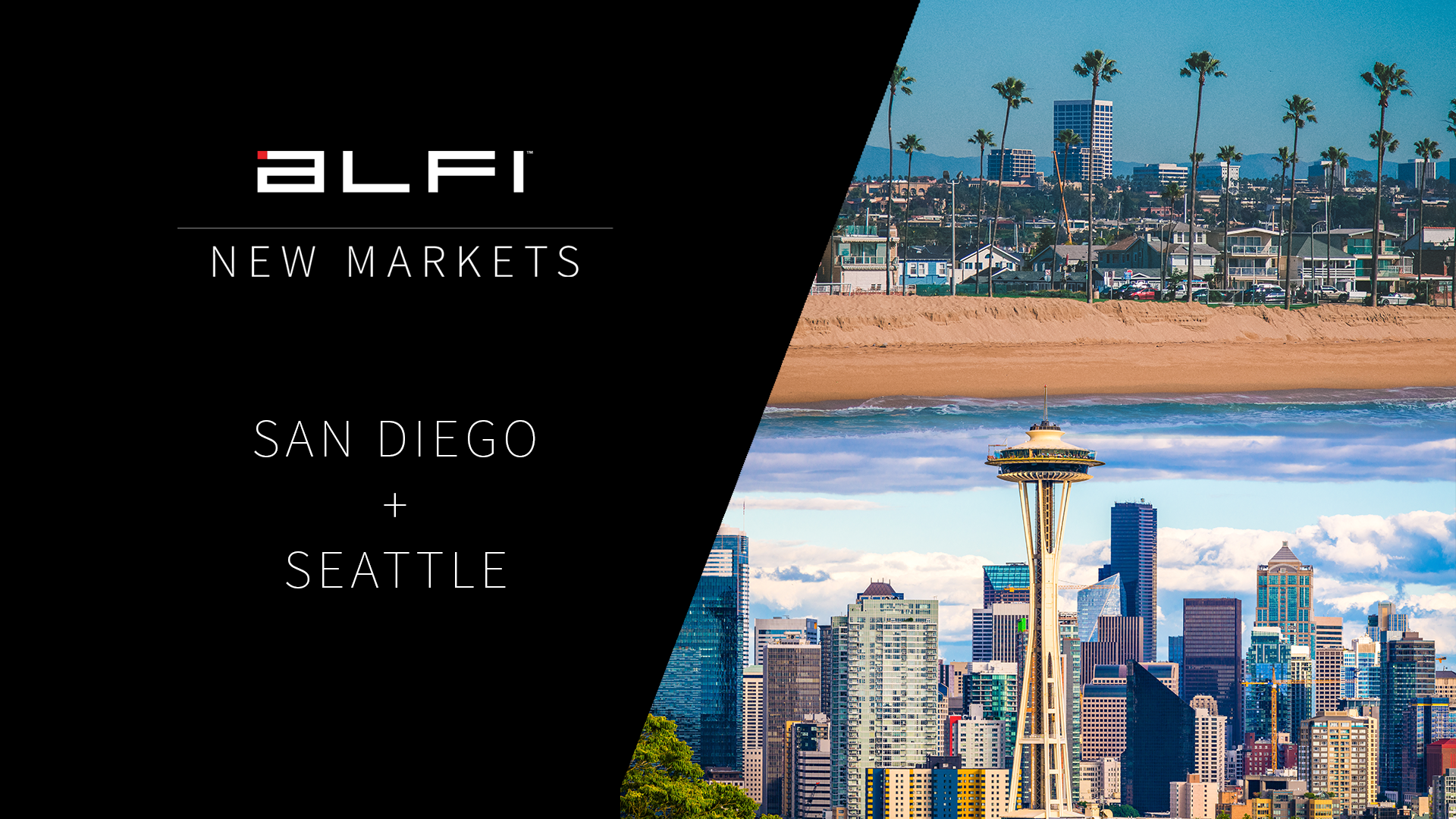It’s tough for businesses to stay relevant in an increasingly digital age – now even more so with pandemic-related restrictions. Is your business trying to reach your target demographic faster and more efficiently? Are you still waiting until the end of a marketing campaign to consider the next steps?
If you’re not utilizing the ease of a demand-side platform, your company is missing out.
What can you gain? Time. Revenue. Better insight into consumer data. Read on to explore more about DSP advertising.
According to Marketwatch, in 2019, the global DSP (Demand-Side Platform) market size was just under $10 billion USD and it is expected to reach $30 billion USD by the end of 2025, with a CAGR of 32.5%.
In this post, we will cover:
- Brief Recap: What is Ad Tech? OOH? DOOH?
- What is a demand-side platform?
- Demand-side advertising platforms and their advantages
- How can DSP Advertising help brands?
What is Ad Tech? OOH? DOOH?
When it comes to diving into the nuances and strategies that make up effective Ad Tech, there is so much to explore, including the many burgeoning technologies that are changing the way businesses reach customers everywhere.
With the rising surge in OOH (out-of-home advertising) and DOOH (digital out-of-home advertising), brands can reach target audiences more effectively, adapt strategies in real time, and access a wealth of data for better decision-making.
Trying to stay ahead of the competition, companies are investing heavily in this sector, with 2020 seeing US programmatic DOOH ad spending more than double year over year, totaling $181.6 million. That figure is predicted to reach $533.8 million by 2022.
There is a reason for that.
According to research by Nielsen, OOH overall is also one of the most effective ways to build validation in companies suffering losses in brand loyalty during the pandemic. While consumer spending habits faltered periodically, according to recent research from McKinsey, 75 percent of consumers stated that they had developed a new shopping behavior since the start of the pandemic.
The opportunity exists if companies can adapt to meet the changes. DSPs can help ease the transition, providing one location for accessing valuable consumer data and an easy way to optimize campaigns in real time with real results.
A brief breakdown of the ecosystem of ad tech and its players:
Advertisers
Demand-side platforms
Ad Exchanges
Supply-side platforms
Publishers
Ad tech is deeply ingrained in all aspects of the landscape for today’s marketers and media buyers. Each of these segments relies on ad tech for modern-day advertising and marketing solutions, in both the demand and the supply side, as well as consumers. Virtually every digital ad platform you use, from Facebook to niche ad solutions, is utilizing some form of ad tech.
From the supply and demand-side, cutting-edge technology has made it even easier for publishers and advertisers. Easy-to-use demand-side platforms allow advertisers to locate, buy, and/or bid on inventory, matching companies to valuable ad space and target consumers instantly.
Automated real-time bidding (RTP) and programmatic advertising have transformed business outreach, better highlighting trends and consumer behavior. Plus, campaigns can be optimized far more quickly than alternatives, allowing you to better capitalize on good opportunities while quickly cutting your losses on missed ones. More on that a little later.
But first…
What is a demand-side platform?
Not to be confused with a supply-side platform, a demand-side platform (DSP) is a single interface allowing advertisers and media buying agencies to search, buy, and bid automatically on display, mobile, video, and all ad inventory listed on the marketplace by publishers.
This piece of software is used to automate the process of buying display, video, mobile and search ads. Historically, digital ads were bought and sold by ad buyers and salespeople in a much more expensive, subjective process.
Demand-side platforms help make that process cheaper and more efficient by removing humans from specific parts of the process. This solves the issue of negotiating ad rates and manually faxing ad insertion orders. It’s an all-in-one solution for everyone involved.
These platforms facilitate the management of advertising across many real-time bidding networks instead of just one, like Facebook Ads Manager, for example. DSPs use programmatic advertising in which ad placements are auctioned off in a process known as real-time bidding.
The benefits of demand-side advertising platforms
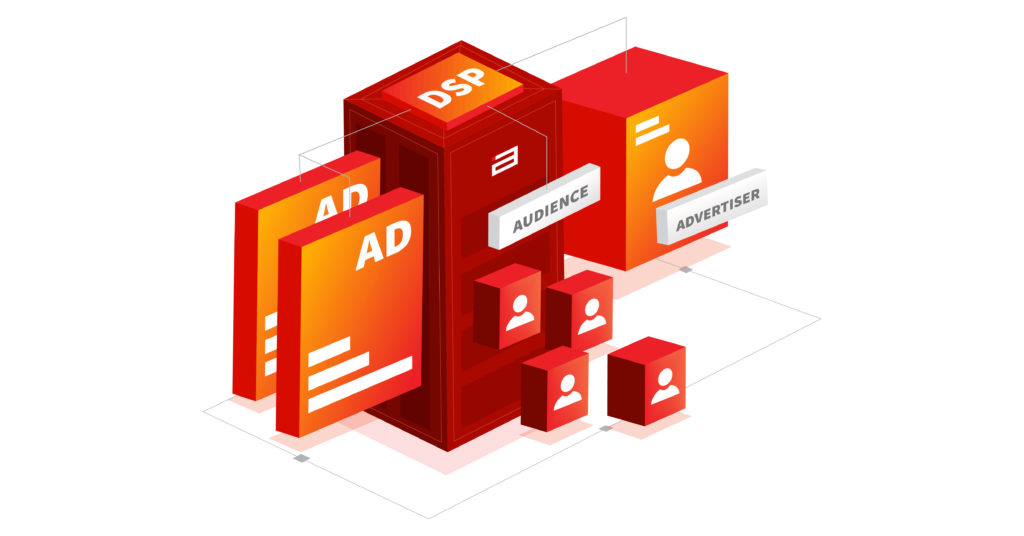
Remember the old school way of getting things done…where the media buyer needed to call or email the advertising agency to select the screens and schedule of their campaigns, get pricing, and negotiate?
Programmatic DOOH advertising has made all of that obsolete. Now, an advertiser simply logs into a platform and with a few clicks, selects all relevant campaign details, targeting, scheduling, placement, etc. The DSP does all of the work, drastically reducing the time spent on buying advertising.
Companies specify what they are willing to spend, who they want to reach with their ads, and then a bidding battle takes place between all of the companies trying to reach that same audience.
As a potential prospect lands on a page, algorithms use all sorts of data like IP address, browsing history, time of day…to determine which ad to display to them. The highest bid for that impression will ultimately win the placement.
All of this is done automatically by a demand-side platform. This intelligent software bids on advertiser inventories using an auction process, making the process cheaper and more reliable, saving everyone time in the long run.
While many DOOH companies have broken the industry mold over recent years, Alfi has taken some of the best qualities of those and added their own unique technology to rethink how the ads will be strategized in the future.
The death of the cookie and the next step in DOOH: Alfi
With the rapid increase in mobile website browsing, major concerns have also been raised over the lack of security and privacy for users. As a result, major companies including Google have made significant changes to the way they collect data and track users. And we are now witnessing the death of the third-party cookie.
Why have Google, Safari, Firefox, and other browsers decided to phase out third-party cookies? They believe the current solutions fail to meet consumer expectations for privacy, aren’t sustainable, and don’t stand up to regulatory restrictions. This places ad buyers in a crucial spot. What now?
While other platforms blur the line when it comes to user privacy, Alfi is building the future of DOOH advertising, by crafting tools that empower media buyers to reach their exact target market, at the right time, for a fraction of the cost in a respectful and ethical manner. Our platform does so by pairing powerful computer vision with AI and machine learning models to display clients’ ads only to their target customers when they’re most susceptible to making buying decisions.
While it sets new standards by providing precise targeting information to advertisers, it does so without intruding or collecting information non-intrusive information gathering, compliant with GDPR, CCPA, and HIPAA.
The genius of Alfi is behind its AI, machine learning, and computer vision models. For the first time, audiences can be targeted in real time based on their behavior and physical demographics. Brands can now determine how effective their OOH ad is at getting attention, but also collect valuable audience data to get true insight on who is paying attention.
What computer vision is, in a nutshell, is the ability for DOOH platforms to capture demographic and behavioral data of consumers as they view DOOH ads to increase the accuracy and effectiveness of targeting. Then, AI combined with the machine learning-powered recommendation engine looks for patterns and responses in human behavior to offer the right content to the right person at the right time.
Beyond traditional out-of-home advertising, Alfi offers benefits including real-time engagement, performance, and reliability. By providing the data behind every impression, Alfi promotes accountability and transparency by only charging customers for the ads that have actually been seen.
DOOH campaigns are typically priced on slot-based pricing, when each time spot in a DOOH platform has a flat advertising rate. Alfi, however, runs on a CPM (cost per thousand, also called cost per mille) model. Currently, the average advertising rate for campaigns is in the range of $1.50 – $5.21, versus the average CPM for Facebook ads at $7.19. The hyper-focused targeting delivering a specific message to a specific group of people is what makes DOOH so affordable.
Along with valuable data and the precision of Google and Facebook targeting for DOOH, Alfi gives media buyers complete control over the campaigns they run for their clients: from dialing down on a specific demographic to intelligent ad purchasing.
Demand-Side Platform advertising and why it works
Looking for an incredibly efficient way to organize all of your advertising content and data in one convenient location? Demand-side advertising platforms simplify what was once a complicated, tedious process.
Instead of having to negotiate with multiple publishers across multiple sources, brands can go to one location across multiple spaces, industries, and locations, input their campaign information, sit back, and adjust the content as data rolls in.
Demand-side platforms are efficient because they connect to advertising inventory supply sources where tons of publishers made their supplies available, so advertisers can buy placements across many different publishers’ websites and mobile apps based on impressions. Many even offer cross-channel media buying too.
DSP advertising allows advertisers and agencies to buy across a lot of websites at the same time – and all of this is done instantly and efficiently, usually before the webpage loads. With the capacity to include audience targeting capabilities, a real-time view of campaign performance, optimizations toward a goal, multi-tactic approaches, and flexible budget shifting, DSPs are the superior choice for advertisers.
With a single marketplace for a range of major publishers, DSPs offer high-quality inventory with access to far more content than that of single networks. This comes along with perks like more dedicated customer support beyond a typical help desk.
They allow mobile advertisers to buy high-quality traffic at scale with minimal friction, and as such, DSPs are a powerful marketing automation tool. This cuts negotiation time to an instant. And it’s designed to optimize outreach and impressions at the same time.
And it gets even better. These ads can even be dynamic, providing impressions and data in real time, allowing companies to adapt and shift strategy mid-campaign.
With Alfi, the advertisers can not only use detailed targeting options for their digital out-of-home campaigns but also pay for impressions and receive detailed analytics to optimize their campaigns. Ad A not performing well? Take it down early. Ad B showing huge success? Invest more and double your conversions.
These demand-side platforms allow media buyers to run end-to-end ad campaigns from the top to the bottom of the sales funnel. They can target audiences from initial awareness stages through interest and consideration all the way to the conversion phase of the funnel.
Some other helpful features of DSPs:
- Geo-targeting
- Demographic targeting
- Keyword targeting
- Contextual targeting
- Device targeting
- Re-targeting
Advertising platforms like Alfi can alternate ads depending on the person who is looking at the screen. For DOOH, that’s unheard of. Alfi can be installed on any device that has an internet connection and a camera, serving personalized content, along with ads, to any person looking at the screen.
With the inclusion of artificial intelligence in marketing, advertisers can use better targeting options for their digital out-of-home campaigns and get better results. Instead of showing their ads to millions of people, advertisers can now refine their targeting to reach the right person at the right time, improving ROI.
Alfi lets advertisers easily snag prime ad spots from prime publishers. Then, they can create campaigns that are shown to thousands of people every day in cabs, Ubers, hotels, restaurants, and much more. Want to know more? Drop us a line and our team will get in touch with you!
